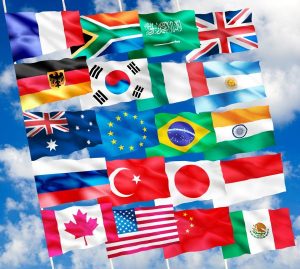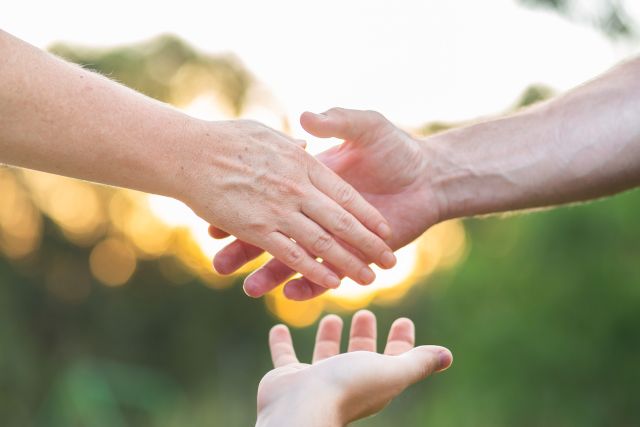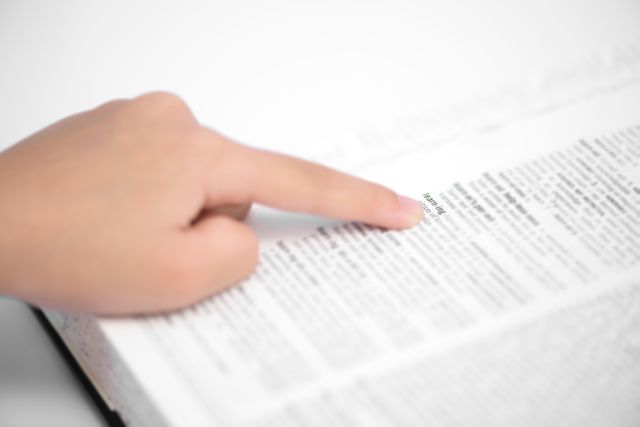What is „Western Reiki“?
The term „Western Reiki“ has already been used by some Reiki practitioners for a number of years. What does this actually mean? What does this term stand for? Oliver Klatt sheds a light on the correlations in the discussion of this topic – and makes a case for a precise choice of words when communicating with each other.
> > Redaktioneller Hinweis: Dies ist die englische Version des Artikels „Was ist westliches Reiki?“, der hier in der deutschen Originalversion zu lesen ist >>
In my perception, the term „Western Reiki“ is frequently used by practitioners and teachers of the Reiki styles that have an original Japanese character such as Jikiden Reiki and Gendai Reiki Ho, that developed over the past 20 years. And this approach also applies to other Reiki practitioners and teachers who are primarily oriented towards what we now know about how Mikao Usui and Chujiro Hayashi practiced and taught the Reiki Method in their day.
When considered more closely, it appears that the term „Western Reiki“ actually means: „ways of practicing and teaching the Reiki Method influenced by the Western world.“

So there is often vagueness in how the term of „Western Reiki“ is used today. As it is obvious – and many who use this term probably seem to share this view – there is just „one universal life energy.“ So there is just „one Reiki.“ And not the „Western universal life energy“ on the one hand and the „Eastern universal life energy“ or even the „Japanese universal life energy“ on the other. This would not make sense since the classification of „universal“ is not compatible with the simultaneous attribution to one specific region of the Earth.*
One life energy
The „one universal life energy“ is the basis of all the ways in which the Usui Method of Reiki is now practiced and taught. So we can say: The differences are not in different kinds of life energy, but in the different shaped ways of using this life energy by means of the Usui system.
I really do not understand why the continents or points of the compass are enlisted to describe the various ways of applying the Usui Method. This is because the use of the term „Western Reiki“ can easily be understood to mean that there are two camps, which actually do not exist at all in their pure form: here the „Western“ styles – there the „Japanese“ or „Eastern“ styles.
All of the Reiki styles practiced today in Western countries, being influenced by people from various parts of the world, nevertheless originally come from Japan. So they all continue to carry these seeds, this important beginning moment, within them.
To the same extent, the practice and teaching of practitioners of styles who have an original Japanese character – with perhaps a few rare exceptions** – have influences that come from people who live or lived in other regions of the world; sometimes more, and sometimes less.
Distinctions
If we look at how the term of „Western Reiki“ is frequently used, it becomes clear that people who practice the forms of Reiki with an original Japanese character often apply it to distinguish their style from those styles that have developed also in other countries and regions of the world as the method has continued to spread.
Distinguishing something to define it more precisely – there is nothing wrong with this. However, it is generally advantageous to do so with straightforward terms and not blurry formulations or innuendos. Some practitioners could feel left out by the latter approaches.
The fundamental question for me is why the word „Western“ is used: As we know, Hawayo Takata practiced and taught Reiki almost exclusively on the Hawaiian Islands for a very long time. Although the islands already belonged to the USA back then, they were – and continue to be – primarily distinguished as a melting pot of diverse cultures, equally mixing Western and Eastern influences. In addition, Hawayo Takata had Japanese parents – so she was also of Japanese origin. And as we know today, she frequently travelled to Japan during her life and spent quite a lot of time there as a result.
The further development of the Reiki Method after Takata’s death – as has been taught and lived by Phyllis Furumoto, Paul Mitchell and other masters since the 1980s – did not occur exclusively in a „Western manner“ but was constantly subject to a variety of influences from various regions of the world. This means that there were – and still are – influences from the USA, Canada and Western Europe, as well as from the South American countries, Eastern European countries, Russia, Asian countries, the Caribbean, Africa, the Arabian world and Australia – and even from Japan.
Especially Phyllis Furumoto and Paul Mitchell, but also other masters trained by Takata such as Wanja Twan and Mary McFadyen, have spent large portions of their lives since the early 1980s in travelling the world. So they have worked with Reiki groups in the various countries and continents, absorbing very different regional influences that also flowed into their practice and teachings of the Reiki Method.
Another factor is that the two major Reiki Master associations that were very influential during the first decades of spreading the Reiki Method (The Reiki Alliance and The Reiki Network) were both highly international associations. And they continue to be international to this day, with members from more than 20 countries in very different parts of the world and not just the „Western“ countries.
World practice
With her work, Hawayo Takata made it possible to spread the Reiki Method throughout the world. Among other factors, this was accomplished by removing the very distinct Japanese characteristics (such as the poems of the Meiji Emperor) that would certainly have stood in the way of this method spreading internationally because of its very specific, regional-cultural orientation. From the perspective of many Reiki practitioners, Takata actually turned the Usui System of Reiki into a world practice – and not a „Western way of practicing Reiki.“ (It is also not correct that the spiritual aspect was incidental in the background of Takata’s teaching – even if people sometimes make this claim.)
With the spreading of the Reiki Method throughout the world shaped by Phyllis Furumoto, Paul Mitchell and others – on the basis of Takata’s teachings – a type of internationally influenced torso form of the Usui Method was created that is not just exclusively subject to Western influences. Instead, it is now distinguished by influences from more or less every part of the world. This development continues today, whereby this form of the Usui Method usually constitutes at least the basis for what most of the worldwide Reiki practitioners learn as the Usui Method of Reiki.
My suggestion is therefore to basically choose words precisely in the specialised discussion of this topic and use distinct terms. (From my perspective, this mandates respect towards the practitioners and teachers of all styles). This will prevent people from simply lumping together certain styles of Reiki through the use of a blurry term.
Differences
Above all, the term of „Western Reiki“ also actually radiates something diffuse by not differentiating between the energy of Reiki and the method of Reiki. It would certainly serve the specialised discussion if those who use it would define exactly what they mean. If this does not occur, the use of this term may feel as if there is an innuendo resonating within it – consciously or unconsciously – that could sound something like: „This ‚Western Reiki‘ – in contrast to the ‚Japanese Reiki‘ – is further removed from what Mikao Usui taught; as a result, it has less essence, is less powerful and/or less spiritual.“
This innuendo – to the extent that it exists on an individual basis – is often due to the respective person having learned a form of the Reiki Method that could perhaps be called somewhat „distorted“ or even „garbled“ in some cases. Which is to say: Partly due to carelessness and partly to changes made on the part of certain initiating Reiki teachers, some people may have the perception that what they have learned as the Reiki Method from these teachers perhaps contains less of the essence. It may appear to be less powerful or less spiritual than a Reiki Method that they later learned in addition to this and was influenced by a style of an original Japanese character.
This can happen. However, when we consider this in the regional sense, it applies not just to the West but also to South America, Eastern Europe, Russia, Asia, Africa, the Arabian world and Australia – and probably even Japan. When seen in this light, it is much more related to the individual persons who present themselves proactively – i.e. initiated Reiki teachers who behave in this way – and not really with „the West.“
Perhaps the situation is actually that many of the Reiki teachers who behave like this are primarily imprinted by Western culture. But to the same degree, there are also initiating teachers – in the West and throughout the world – who have passed on the Reiki Method on the basis of Takata’s teachings without giving those who learn from them the feeling that it in any way is lacking in its essence, power or spirituality.
There are also a great variety of ways to learn Reiki in the Western world – and these cannot be simply lumped together. Seen in this light, the term of „Western Reiki“ ultimately is not very helpful in this specialised discussion with each other. And this would also apply if we were to change the formulation into something like „Western-influenced ways of teaching Reiki.“ Because these „Western-influenced ways“ often tend to ultimately be more differentiating than connecting.
Openness
I would like to offer the opportunity for people to communication about this topic in Reiki Magazine. I would especially like to invite those who use the term „Western Reiki“ to describe what they understand it to mean. Please write your thoughts on this to:
or via post to
olivers Verlag
Reiki Magazin
Wiesbadener Str. 14
12161 Berlin
Germany
The editorial department of Reiki Magazin looks forward to contributions on this topic!
—-
Comments:
* The essence of this basic thought also applies to other translations of the Japanese character „Rei“ such as „spiritual,“ „divine“ or „present in the atmosphere.“
** The only exception to this are probably Japanese Reiki practitioners who a) have never practiced and taught something other than what the Usui Reiki Ryoho Gakkai (a society that was (probably) founded by (or for) Mikao Usui) taught, b) never had contact with Reiki teachers within Japan who were subjected to non-Japanese influences and c) have never left Japan.
Copyright Foto: cooperr – Fotolia.com
Reiki Anbieterverzeichnis
Hier finden Sie Reiki-Angebote für Anfänger und Fortgeschrittene nach Postleitzahlen geordnet in
Deutschland, Österreich und Schweiz >>
Gesamt-Inhaltsverzeichnis
Sämtliche Artikel aus allen Ausgaben des Reiki Magazins sind hier aufgelistet, in unserem Stichwortverzeichnis >>


